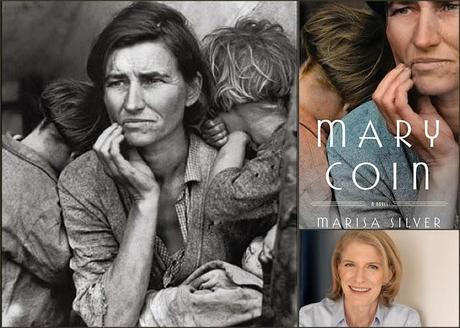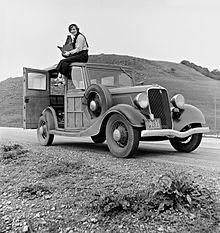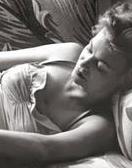
"Maybe I can get the little ones to turn around," the lady said. "That's right. Just turn right around so you're not looking at me. One of you on each side of your mama. Just like that."
Della and James did as they were told and faced away from the camera. James leaned into Mary's shoulder to let her know he was there. Her protector. Her silent guardian. The bay made small mewling sounds. Mary put her hand to her chin and worried the tiny scar that remained from when her mother had held four quarters in her hand and cut her across the jaw. She looked away.
The woman took a photograph. "Thank you," she said. "I've got what I need." She turned and limped back to her car. (p. 168)
In her novel,
Mary Coin, Marisa Silver has re-imagined the story of the Migrant Mother. She has done it brilliantly through her creation of Mary, the mother of seven children determined to survive; Vera, the photographer who suffers her own difficulties with a leg that polio has left sagging and limp as well as a husband who seeks the pleasure of other women; Wallace, the man who examines history both in what he teaches in his classes and what he seeks in his own life. Their stories are interwoven in a warp and woof which reminds us that we aren't so very different from these people who lived through the Great Depression of the 1930's. We ask the same questions, of ourselves and others. We suffer in similar ways.
She readied her camera, trying to find a good angle. Her awkwardness and effort sundered any idea she had about trying to be inconspicuous. Adrenaline made her hands shake. Someone bumped into her from behind, and she turned, half expecting to be warned off and told to go back where she came from. What right did she have to take photographs of strangers? But she knew these faces. Even if she had never seen a single one of these people before, something deep inside her recognized them. These people had been made to feel inadequate, abnormal. Their lives were disfigured by circumstance. She had to take their pictures because what she saw, what she saw, marked her as much as limp or the fact that she was the only gentile in a school filled with Jews or that her father did not love her enough to stay. (p. 140)

Here is a photograph of Dorothea Lange, the woman hired by the Farm Security Administration to record the Great Depression. See more of Dorthea Lange's work here.

 Here is a photograph of Dorothea Lange, the woman hired by the Farm Security Administration to record the Great Depression. See more of Dorthea Lange's work here.
Here is a photograph of Dorothea Lange, the woman hired by the Farm Security Administration to record the Great Depression. See more of Dorthea Lange's work here.

